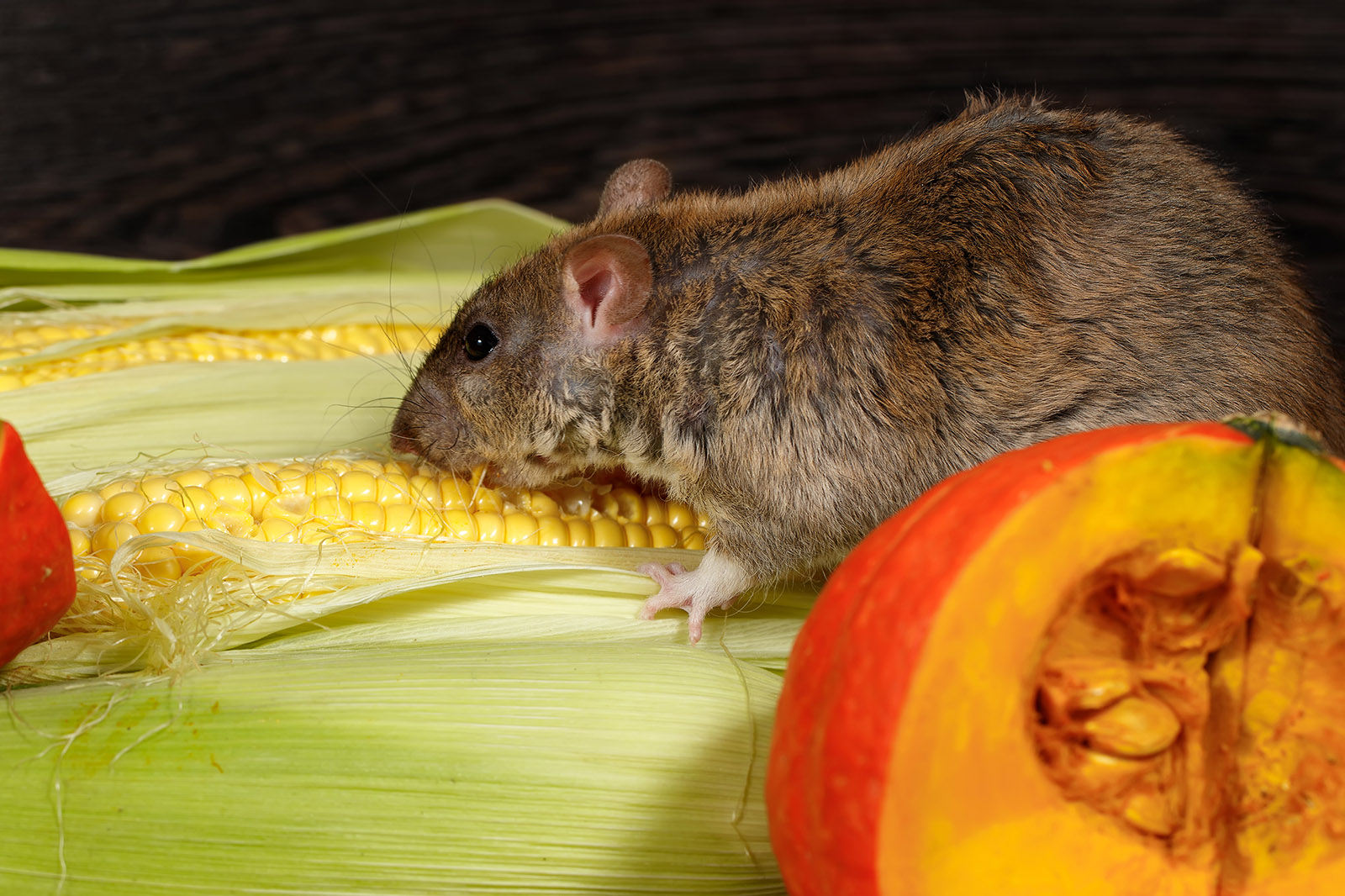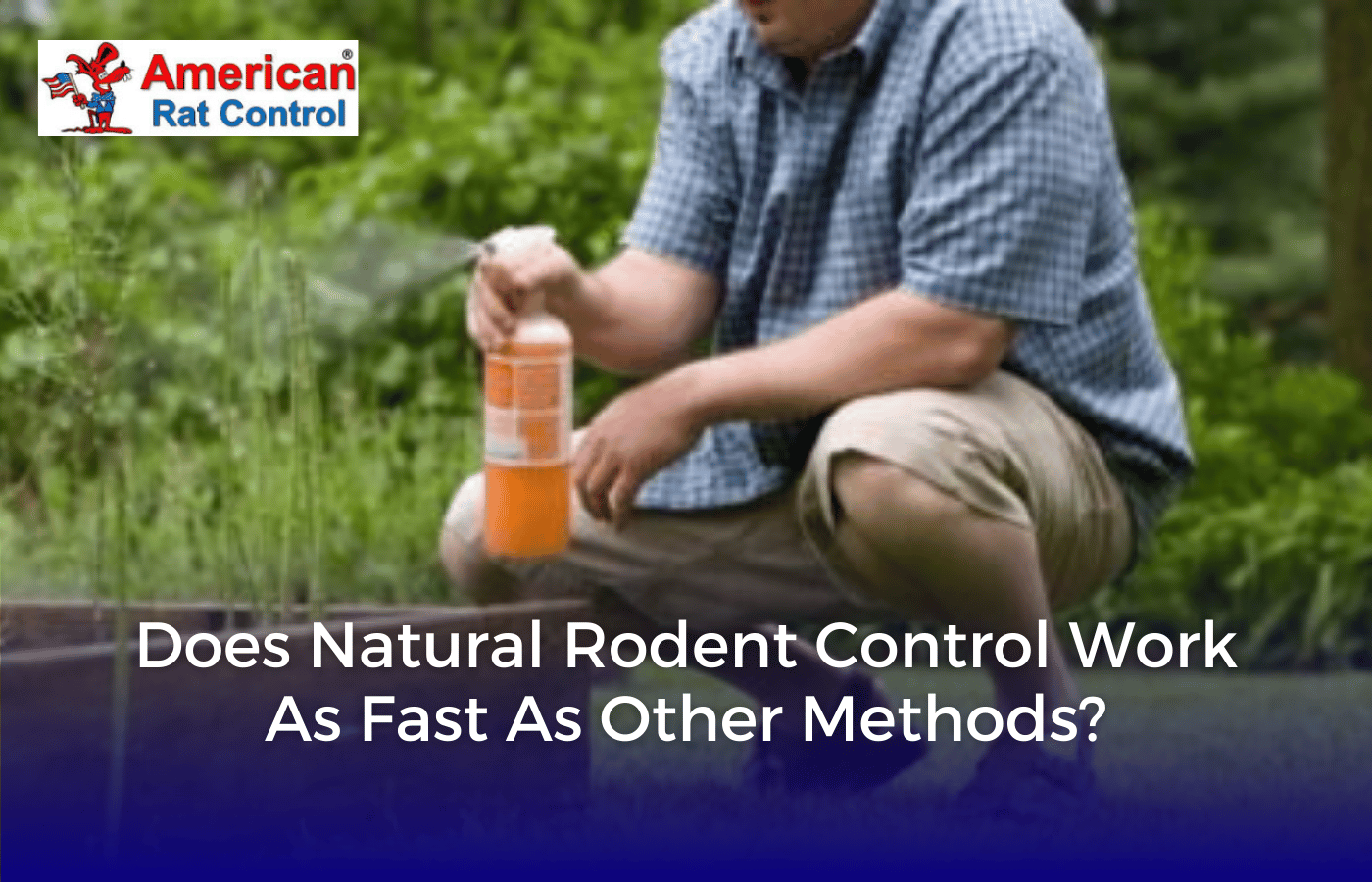Throughout history, mice and rats have been able to adapt to their environment and have been a nuisance to humans. Though rats do not need a lot of food to live, and will eat almost anything when they are hungry, a rat infestation is bad news for your home. Rats spread disease, cause structural damage with gnawing, and contaminate food.
Once rats create a nest, they can be difficult to get rid of. They stay out of sight, move at night or in the dark, and continue to propagate. What attracts mice and rats to your home in the first place?
If you have places for them to nest, that can be an invitation to them to make themselves at home. Clutter on your property, open compost piles, wood piles, piles of leaves, accumulated garbage are all places where rats can hide. But they also need food to survive and thrive.
What are some food sources that attract mice and rats to your property? What are food sources that you should take extra care with storing and disposing of if you suspect you have an infestation?
Plants
There’s a reason it’s recommended to keep your overgrown vegetation and foilage trimmed down. Rats can survive and type of plants, and they especially like nuts, seeds, and vegetables. They also use overgrown vegetation to conceal their movement, as they like to move around the perimeter of your property, fence line, or house. Mice and rats can use this for nesting material as well.
Although there is no one particular plant that rats prefer over others, keeping your landscaping tidy and timed back will help dissuade rats from seeing your property as a welcoming environment.
Fruits and Berries
Rats and mice are strongly attracted to berries and fruits. If you have strawberry plants or blackberry bushes, watch to make sure these are picked regularly, and are not providing a food source for rats.
Rodents also love fruit like apples or pears. If you have fruit trees or bushes on your property, makes sure any fallen fruit is picked up promptly. Remember that rats can climb trees to reach fruit. Check regularly for signs of rodents gnawing on fruit still on the branches.
Seeds and Grains
Rats love grains and seeds. They will raid bird feeders for bird seed, try to infiltrate grain storage bins, and if they enter your home will look for oats, sunflower seeds or other baking materials.
Keep an eye on any bird feeders, as rats can climb trees and buildings to reach food sources. Keep any seed, grains, or animal feed stored outside in tightly sealed bins (either metal or durable plastic). Baking materials like oats, seeds, flour, or baking mix is safest when stored in Tupperware or resealable bins.
Nuts
Mice and rats crave the high protein found in hazelnuts, peanuts, cashews, and other nuts. Keep these sealed in an airtight container. Do not store nuts outside or in the garage, where mice can access these.
Rodents also love peanut butter, almond butter, and hazelnut spread. Be sure to keep these in the refrigerator if you suspect a rat infestation. They may try to access these jars if they are stored in a dark cupboard.
Meat, Bacon, and Animal Fat
Though mice and rats are more drawn towards nuts, seeds, and grains, they also love meat. Bacon, jerky, beef, pork, hot dogs or other meat can attract rats, which are more prone to eat meat than mice.
Keep pans and skillets clean, and store lard or jerky in secure glass or plastic containers. If you throw out steak, chicken, or pork scraps, tie them in a plastic bag, and take out the kitchen trash often. The smell of meat is succulent to rodents near your home.
Pet Food
Rodents look for nutrients, and pet food is often stored in the garage or outside. If the food is good enough for your dog or cat, it’s good enough for mice and rats.
The smell of pet food will draw rodents, so if you keep the pet food outside or in the garage, consider putting it in a sealable plastic garbage bin. This will keep mice and other pests out of the pet food.
Rats will also eat fish food, bird food, horse food, or any other type of pet food. Make sure your pet has enough to eat at feeding time, and pick up their dishes after they are done, and store those in a container that rats can’t chew through.
Sweet and Salty Snacks
Mice are particularly drawn to foods with high caloric nutrition. Jams, jellies, honey, sugar, chocolate, granola, and cereal are like a buffet to a hungry rat.
Similarly, beef jerky, crackers, chips, cookies, pastries, or other foods with lots of calories will draw mice to their source.
Store these items securely in sealable containers. If you throw these items in the trash, seal them in a bag, so the scent doesn’t spread easily through your home.
Garbage Scraps and Leftovers
Garbage cans that are not sealed tightly can be entered by rodents, and those leftovers you threw out are like a feast to mice. Keep garbage indoors from overflowing, and take that out to a secure garbage bin regularly. Also make sure that dirty dishes aren’t sitting in the sink for days. Keep your indoor environment tidy and free of easily accessible food sources for mice.
This also applies to outdoor compost piles. Potato and apple peels, outdated produce, and table scraps that are in an outdoor compost pile can be a food source for a rat colony.
Food Stored in Cardboard Boxes
Mice and rats will eat cardboard, paper, wiring, or other strange nutrition sources when they are hungry. Cereal boxes, pancake mix, cracker boxes, energy bars, or other food items stored in the cupboard or pantry can be food sources for a hungry mice colony. If you want to proactively prevent rat infestation indoors, store those items in a Tupperware or sealable plastic container. Mice will be far less likely to smell the food or chew through the plastic. Carboard is an easy barrier for mice to chew through.
Wrapping Up
Best practices for food storage and sanitation can prevent rats and mice from being attracted to your home. Be sure to keep your home tidy and uncluttered, as these can be places for mice to hide and form nests.
Also make sure there are no holes in the outer walls of your home, or cracks and crevices for mice to enter. Mice can enter even very small holes, as the largest bone in their body is their skull, which is about the circumference of a large pencil.
If you have been proactively safeguarding against rats and mice, but you still have in infestation, call the rodent control team at American Rat Control at (866) 728-2878 . We can help remove the rodents from your home in the Los Angeles area.








